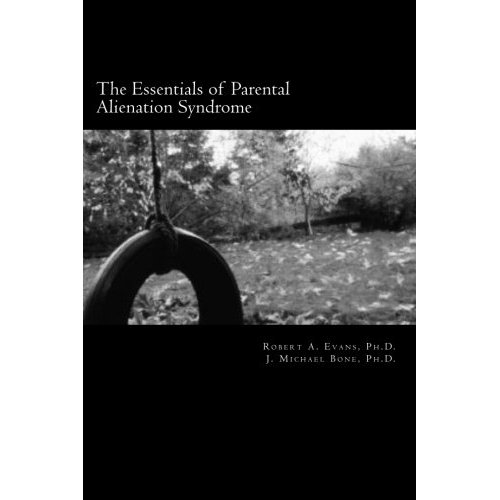FOREWORD
This book, The Essentials of Parental Alienation Syndrome, is written by two well-known psychologists, Robert A. Evans and J. Michael Bone, and it is a tribute to the pioneer contributions of child psychiatrist Richard A. Gardner. Whenever there are new theories, concepts and practices that become well-accepted and established in a particular field, there are those professionals identified as the “old timers” and then there becomes a new generation of professionals that brings these concepts to a new level of understanding and practical implementation. Unfortunately, in the progression of developments in the field and the introduction of similar terminology to describe the fundamental phenomenon, the founders and the leaders often recede in the background. Instead of using the original term parental alienation syndrome, similar concepts have been introduced such as parental alienation, divorce-related malicious mother syndrome, hostile parenting, brainwashing parent and divorce poison. The latter term is well- recognized by the popular book for general public reading written by clinical and family psychologist Richard Warshak. The new wave is being led by forensic psychiatrist William Bernet who has led the informal task force of distinguished contributors to what now becomes a movement in support of the diagnosis of parental alienation and parental alienation syndrome to be included in the DSM-5 and the ICD II, see the textbook on this subject published in 2010. The term proposed for these diagnostic manuals is that of parental alienation disorder. There are over 600 professional references to PAS consisting of journal articles, books and papers presented at national conferences.
From the Foreward:
The last book written by Dr. Gardner was in conjunction with me and later joined by Demosthenes Lorandos, Ph.D., J.D. entitled The International Handbook of Parental Alienation Syndrome: Conceptual, Clinical and Legal Considerations which was published in 2006. The vision of Dr. Gardner was to provide an international perspective of appreciation that this form of emotional child abuse is not restricted to the United States or any particular ethnic or cultural group but rather is widespread throughout the world. Recognition of the developments of Dr. Gardner’s contribution began with his first book on this topic, Family Evaluation in Child Custody Litigation published in 1982, and it was followed by The Parental Alienation Syndrome and the Differentiation Between Fabricated and Genuine Child Sex Abuse in 1987. The unique contribution of this book, Essentials of PAS by Drs. Evans and Bone is the streamline compilation and synthesis based upon their analysis of the many diverse contributions of Dr. Gardner. Consider the prolific work of Dr. Gardner writings of about 40 books plus about 130 journal articles now being described in a pocket edition.
In this spirit, as editor of The American Journal of Family Therapy, last year introduced a change in the book review department. Included now are reviews “Oldies But Goodies” meaning that a book published 10 years ago should not be forgotten and we should be reminded of its seminal contribution as a classic textbook in the field. Selected for review in this category was Dr. Gardner’s second edition of The Parental Alienation Syndrome: A Guide for Mental Health and Legal Professionals published in 1998. The first edition was published in 1992. This book by Evans and Bone is a welcomed and refreshing condensation that is now offered by the “old timers” who have known Dr. Gardner and lived during the times of the controversy in his contribution to the field.
During the developmental stages of the infusion of the contributions by Dr. Gardner, I, in particular, requested that he write the article Misinformation Versus Facts About the Contributions of Richard A. Gardner, M.D., published in the AJFT in 2002. Dr. Gardner began the article quoting philosopher Arthur Schopenhauer as saying:
Secondly, it is violently opposed.
Thirdly, it is accepted as self-evident.
What is missing from many of the newer professional textbooks and popular public books for PAS victims on this topic is the basic and fundamental theory of causation, classification, and amelioration of what is happening. To the targeted parent is the identification that they are not alone and that many other parents who have become estranged from their children through no fault of their own as a result of an acrimonious divorce often with the personality of a borderline spouse displaying narcissism and possessing the qualities of being anti- social in the true sense of the word, an absence moral fiber and human consciousness of right and wrong in their malicious conduct to achieve their ultimate goal of a parentectomy. This book provides useful information and will be therapeutically helpful to its readers.
S. Richard Sauber, Ph.D., ABPP
Forensic family psychologist
Formerly, Professor of Psychology in the Medical Schools of Brown, Columbia and the University of Pennsylvania



Congratulations to Dr. Bone and Dr. Evans. Their work to raise awareness of parental alienation and help families avoid these heartbreaking situations is appreciated by many.
Much success with the book!
Sincerely,
mike jeffries